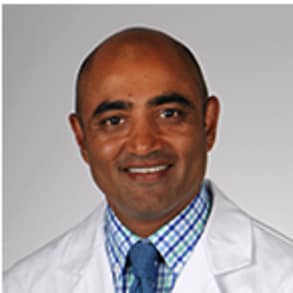RAVIKUMAR K VEERASWAMY: Thoracic aneurysm occurs when there is weakening in the walls of the aorta in the thoracic location up in the chest. This results in dilation and ballooning of the aorta. In true aneurysm involving all the layers of the aorta, it grows slowly over time and if left untreated, obviously it can rupture which is a life threatening situation that's usually not salvageable and does not have a good outcome once it has ruptured.
That's distinguish from pseudoaneurysm, which can occur if there is a defect or a calcification in the wall of the order leading to essentially a pinpoint hole with blood leaking out slowly over time. So there are true aneurysms and pseudoaneurysm both of which can occur in the thoracic location.
A thoracic endograft is essentially a sleeve lining. It re-lines the inner wall of the thoracic so that blood flows through the thoracic endograft or endostent and does not hit the walls of the aneurysm. You can think of it as relining of the aorta. That's probably the most apt description. For late people, I use the analogy of soda going through a straw, so it doesn't hit the walls of a soda cup. It goes through the straw instead.
But the procedure generally consists of us gaining access in the femoral arteries in the groin. In my practice, this is almost exclusively done percutaneously, so there's no incision at all. We generally gain access to both femoral arteries, the right and the left, and we deliver the endostent through one side and use the other side simply to get pictures and so on while we're doing the case. At the end of the case, we close both groins with a suture device, so the patient literally walks out with a Band-Aid. And by the second day, there's really no noticeable scar at all.
The endostent is delivered from the femoral artery. It's encased in a sheath and delivered to the thoracic aorta. We then pull the sheath back through a variety of mechanisms depending on which brand we're using, and the endostent is a self-expanding stent, so it has its own radial force and we achieve a seal proximal and distal to the aneurysm so there, again, the aneurysm itself is excluded and doesn't feel any of the pressurized blood flow.
The biggest advantage of thoracic endograph placement is that it's obviously minimally invasive. We have, as I just mentioned, access site in the femoral arteries, which is very minimally invasive usually without even an incision, and that's contracted with a big thoracic incision or thoracoabdominal incision, deflation of the left lung and so on. So this is an area where endovascular surgery has probably had the largest impact. You've really taken a really massive open surgical procedure and brought it down to something that can be done and the patient goes home the next day. So that's the biggest advantage.
We have some other advantages as well. I think the rates of paralysis, the rates of stroke, and so on are much lower with thoracic endografting than there are with open thoracic surgery. Of course, there are complications to every surgical procedure, including thoracic endografting. We worry about spinal cord paraplegia or paralysis. Again, it's much lower than in open surgery, but it certainly can occur. We also worry about migration of the thoracic endostent over time, so we have to monitor these patients. There is some requirement for follow up longitudinally over the next months to years.
The most feared complications typically are having an intraoperative [INAUDIBLE] procedural stroke, paralysis, and then the need for long term follow up. What we're finding is in study after study that the rates of complications are clearly lower for thoracic aortic endostenting than they are for open thoracic aortic surgery.
When dealing with the thoracic aorta, it's imperative that you come to a high volume center. MUSC is one of those centers. We take care of a lot of these patients and have developed a lot of experience in understanding who is going to benefit from a thoracic endostent, who we need to treat emergently, who we can treat electively, and those things just come from experience and seeing lots of patients over the years.
In particular, if you have patients with complex thoracic problems, such as acute dissections, chronic dissections, those are patients that are really best served at a place like MUSC where you have me as a vascular surgeon working in collaboration and very closely with my colleagues from cardiac surgery, from cardiology, so we all discuss the patients together in a multi-disciplinary approach and come up with the most ideal solution for each patient.
Developing that sort of experience and volume takes a lot of time, and at MUSC, you have the advantage of someone like me who has done this type of work for over a decade with one of the largest practices really in the country. And it's a huge advantage to the patient when they come to a center like MUSC, which has that experience built in.
